Search results for: 'Art'
-
 Cicero - very rare German 1535 edition with 234 partially page-large woodcuts
Cicero - very rare German 1535 edition with 234 partially page-large woodcutsThe only 1535 edition currently available on the market known to us. Very good condition, appropriate for the age of the volume. Especially worth mentioning are the rich illustrations showing Death as Grim Reaper, feasts, a woman giving birth with midwife, and a scholar wearing glasses.
€7,800 Rare plastic Roman oil lamp part shaped as Priapus
Rare plastic Roman oil lamp part shaped as PriapusFigure of Priapus, god of fertility and protector of male genitalia, as bearded older man in heavy robes, his hands exposing his phallus.
€890 Hoard from the Late Bronze Age
Hoard from the Late Bronze AgeComplete surviving hoard consisting of one bronze bowl, two belts and twelve bracelets. Urnfield culture HaB1. The amazingly well preserved group is excessively rare on the art market as well as in museum collections.
€12,500 Classicist intaglio with eleventh labour of Hercules
Classicist intaglio with eleventh labour of HerculesA masterpiece of classicist stone cutting. The large intalgio made of white chalcedony shows the 11th labour of Hercules. An early 19th century work, when classicism dominated the arts in Europe.
€3,800 Dagger from the Northern European Bronze Age
Dagger from the Northern European Bronze AgeThe double edged blade is from a dagger or short sword of the 2nd Millennium BC. With a nicely cleaned surface with a slight patina.
€2,600 Buy Bronze age palstave axehead
Buy Bronze age palstave axeheadNicely decorated piece from a Bronze Age hoard found in Manston, UK. 1400 to 1150 BC.
€720 Buy Bronze age palstave axehead
Buy Bronze age palstave axeheadExtremely well preserved piece from a Bronze Age hoard found in Manston, UK. 1400 to 1150 BC.
€720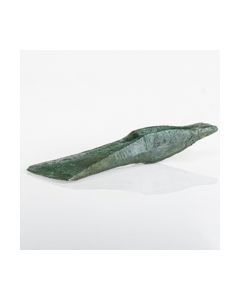 Palstave axehead with decoration
Palstave axehead with decorationExtremely well preserved piece from a Bronze Age hoard found in Manston, UK. 1400 to 1150 BC.
€720 Neolithic sickle from Denmark
Neolithic sickle from DenmarkCrescent-shaped blade made of beautiful brown flint. This tool represents an intermediate state within the radical transition from Neolithic to Bronze Age.
€700 Neolithic flint sickle from Denmark
Neolithic flint sickle from DenmarkCrescent-shaped blade made of beautiful brown flintstone. This tool represents an intermediate state within the radical transition from Neolithic to Bronze Age.
€530 Neolithic flint sickle from Denmark
Neolithic flint sickle from DenmarkCrescent-shaped blade made of beautiful reddish-brown flintstone. This tool represents an intermediate state within the radical transition from Neolithic to Bronze Age.
€520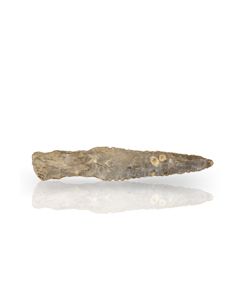 Neolithic flint dagger from Denmark
Neolithic flint dagger from DenmarkDouble-edged blade and flat shaft made of beautiful flintstone. A status symbol from the transitional period between Late Neolithic and Early Bronze Age.
€650 Disc brooch from Roman Britain
Disc brooch from Roman BritainBrooch with a Romano-Celtic sunburst design. Circa 2nd century. A find from Roman Britain
€190 Neolithic flint dagger from Denmark
Neolithic flint dagger from DenmarkDouble-edged blade and flat shaft made of beautiful flintstone. A status symbol from the transitional period between Late Neolithic and Early Bronze Age.
€480 Sword of the Urnfield culture from a museum collection
Sword of the Urnfield culture from a museum collectionWonderfully preserved bronze weapon from the time around 1000 BC. It was made in Central Europe by the Urnfield culture and formed part of a museum collection for almost 70 years.
€13,500 Neolithic dagger blade from Denmark
Neolithic dagger blade from DenmarkDouble-edged, pointed blade made of beautiful flint. The blade was for a dagger, the typical status symbol from the transitional period between Late Neolithic and Early Bronze Age.
€480 Neolithic dagger blade from Denmark
Neolithic dagger blade from DenmarkDouble-edged, pointed blade made of beautiful flint. The blade was for a dagger, the typical status symbol from the transitional period between Late Neolithic and Early Bronze Age.
€470 Neolithic axe head
Neolithic axe headThe strong blade was probably used for a battle axe. Crafted from grey rock. An artefact from the Neolithic Age of Europe.
€490 Massive roman Hercules bronze figurine with silver torc
Massive roman Hercules bronze figurine with silver torcThe figure is of very high workmanship, details like facial features and hair are finely worked and still perfectly preserved. Ex Cahn, ex Bonhams.
€24,950 Roman gold fingerring
Roman gold fingerringNice piece of jewellery from the later Roman Imperial period. With beaded wires and intaglio. Found in England.
€2,400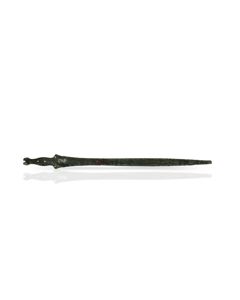 Sword from the Hallstatt period
Sword from the Hallstatt periodImpressive bronze weapon from the Early Iron Age around 700 BC. Made in the region of today's Germany or surrounding countries.
€4,550 Neolithic axe head
Neolithic axe headNicely crafted tool made of beige stone. From the New Stone Age of Europe. A specimen of the thick butted type with thin blade.
€245 Large Roman roof tile from the Rhineland
Large Roman roof tile from the RhinelandWith loop-shaped mark. Found near the Roman city of Novaesium, today's Neuss in Germany, an early Roman foundation and with this one of the oldest cities in Germany.
€740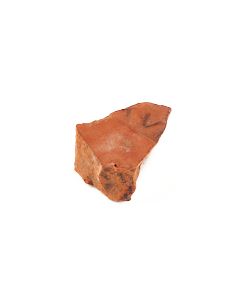 Roman legionary tile from the Rhineland
Roman legionary tile from the RhinelandLEG XVI (Gallica), 43 - 70 AD. Found 1966 till 1981 near the Roman city of Novaesium, today's Neuss in Germany. Novaesium was an early Roman foundation and with this is one of the oldest cities in Germany.
€180 Roman legionary tile from the Rhineland
Roman legionary tile from the RhinelandLEG VI (Victrix), 70 - 104 AD. Found 1966 till 1981 near the Roman city of Novaesium, today's Neuss in Germany. Novaesium was an early Roman foundation and with this is one of the oldest cities in Germany.
€250 Four Roman roof tile fragments from the Rhineland
Four Roman roof tile fragments from the RhinelandFound 1966 till 1981 near the Roman city of Novaesium, today's Neuss in Germany. Novaesium was an early Roman foundation and with this is one of the oldest cities in Germany.
€120 Roman Terra Sigillata bowl from the Rhineland
Roman Terra Sigillata bowl from the RhinelandFound near the Roman city of Novaesium, today's Neuss in Germany, an early Roman foundation and with this one of the oldest cities in Germany.
€320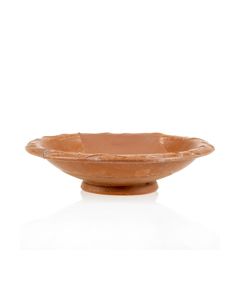 Roman Terra Sigillata bowl from the Rhineland
Roman Terra Sigillata bowl from the RhinelandFound near the Roman city of Novaesium, today's Neuss in Germany, an early Roman foundation and with this one of the oldest cities in Germany.
€280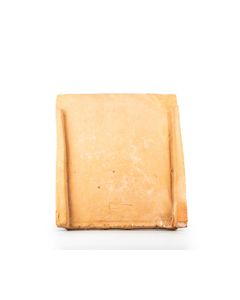 Large Roman legionary roof tile produced by Legio VI Victrix 70 - 104 A.D.
Large Roman legionary roof tile produced by Legio VI Victrix 70 - 104 A.D.Excellently preserved, extremely rare for an object of this size. Found near the Roman city of Novaesium, today's Neuss in Germany, an early Roman foundation and with this one of the oldest cities in Germany.
€1,400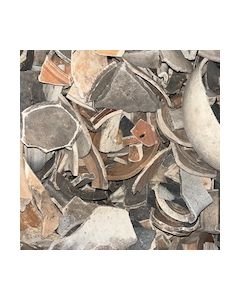 Roman potsherds from the Rhineland - sold by weight
Roman potsherds from the Rhineland - sold by weightFragments of Roman pottery. Finds from the Roman city of Novaesium, today's Neuss in Germany, an early Roman foundation and with this one of the oldest cities in Germany.
€75

